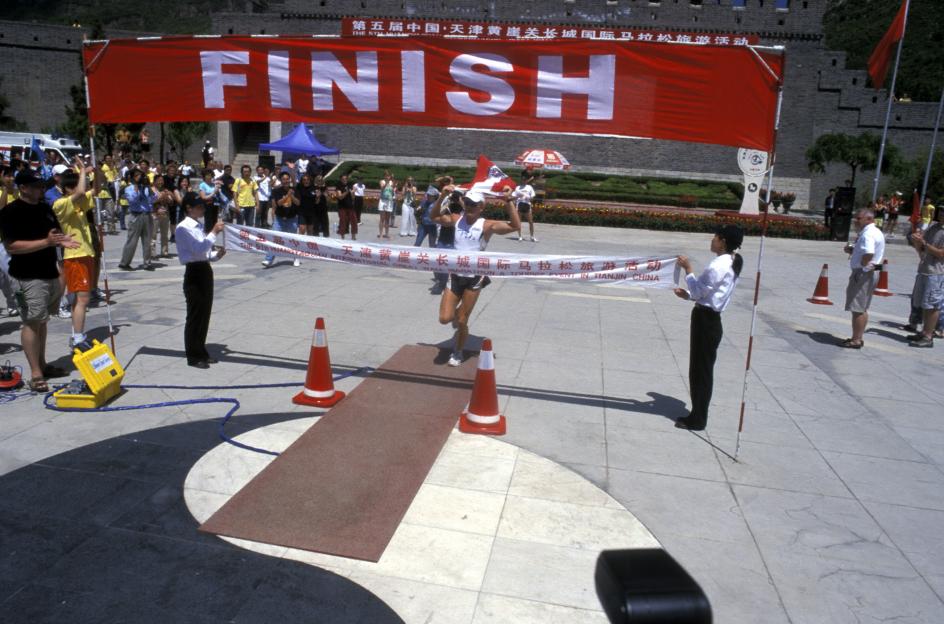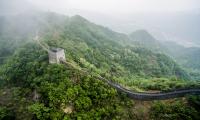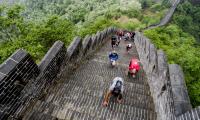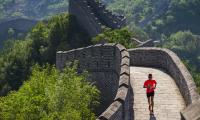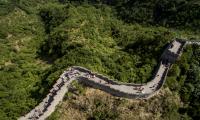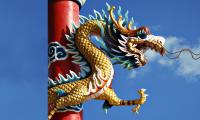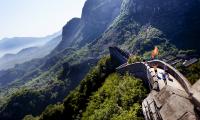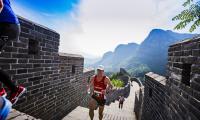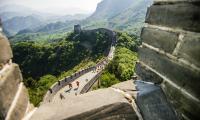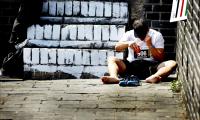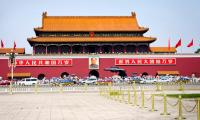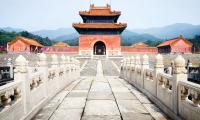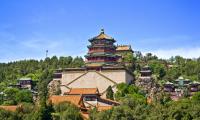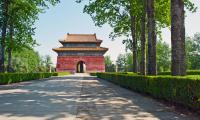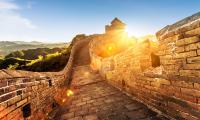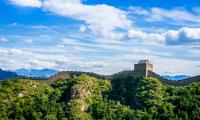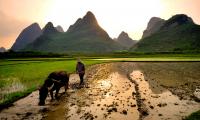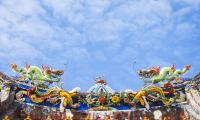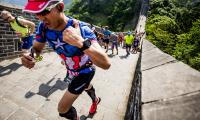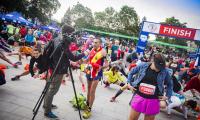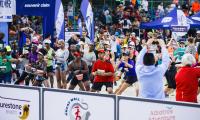The story of the Great Wall Marathon
The following year, in 1999, the first Great Wall Marathon took place with 292 runners.
Strange as it may now seem, organising marathons was not something I could ever see Albatros getting into. This niche area just didn’t fit in with Albatros Travel's concept of organising specialist group tours.
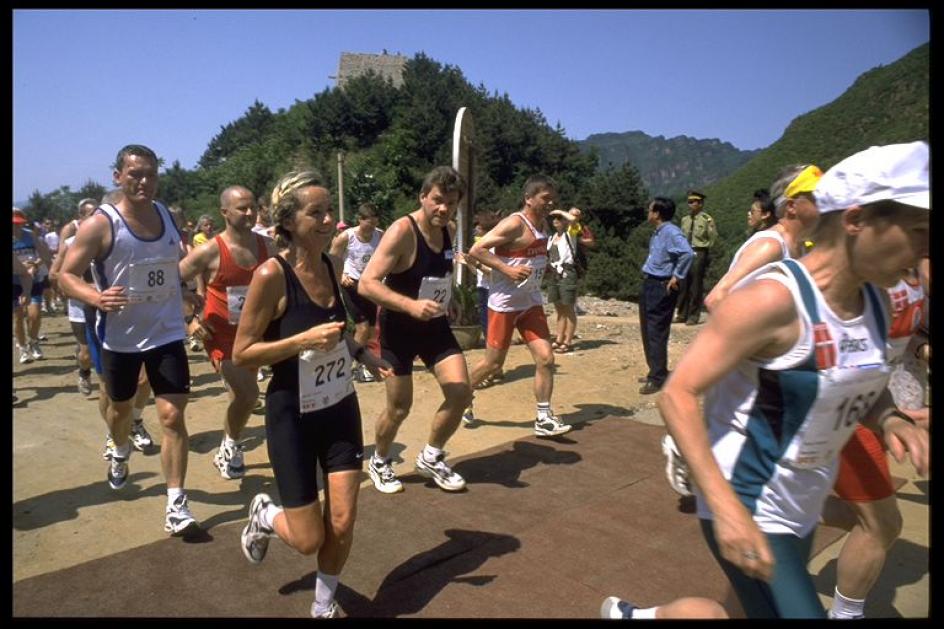
In fact, when the idea originally came up during a discussion on how we could expand what we offer in China, I shot it down immediately thinking that it was far too specialised for us. I was growing tired of producing complicated itineraries for small groups of people as these inevitably involve a lot of work for very little money.
That evening I went for a short run. As I was running the idea of running a marathon entered my head for the first time. Running a marathon? - the idea seemed a bit unrealistic as I was not (then) much interested in the idea of running for enjoyment.
"Running a marathon? - the idea seemed a bit unrealistic as I was not (then) much interested in the idea of running for enjoyment. To me it was just a laborious way to counter middle-aged spread."
To me it was just a laborious way to counter middle-aged spread. But it suddenly struck me that a run along China’s famous Great Wall - The Great Wall Marathon: what else could it be called? - would be a great addition to our brand and could really have an impact for this small Danish travel agency with lofty international ambitions. But would such a run be realistic? Can you run on the wall, or would it be too risky?
The idea burned in my brain, and I determined to find out the answers to these tricky questions. I put this crazy idea to Thomas Thomsen, Chairman of the Danish Athletics Association, and sports journalist Peter Fredberg - both avid runners - and the response they gave me was overwhelmingly positive. It turned out that, yes, one could run on the wall (or at least parts of it), but there would be a lot of steep steps so runners would have to be in good shape. It would be a daunting run, but the correct training would prepare runners for the challenge.
Thomas, Peter and myself immediately headed off to China to see if we could make a route along the wall or whether it was just rubble and bits of debris. With the help of our local partner we were shown a section of the wall that we immediately felt was ideal. The section extends into Tianjin Province and winds through dramatic and lush scenery. It is beautiful and only a few hours’ drive from Beijing. Looking at this seemingly impenetrable fortification it was easy to understand why Genghis Khan had decided to go around it when he attacked the Jin Dynasty in the thirteenth century!
It was refreshing to discover that tourism was little known in this area. There were none of the stalls selling Mao’s Little Red Book, and most of the Great Wall here was authentic in that it did not look like it had been refurbished to suit visitors. Indeed, here it remained in its old form, and along the potential route we could see numerous small traditional villages which would enrich the view for the runners and furnish it with some rare authenticity.
We examined the wall in great detail and decided on a relatively easy route that would start off from the highest possible point and bring the runners down to what we call today Yin and Yang Square. The view from the wall was fantastic and we could see the countryside stretching in all directions around us. Oxen worked in the fields below alongside the old traditional irrigation systems, and farmers moved around in this landscape that looked like something from a film set.
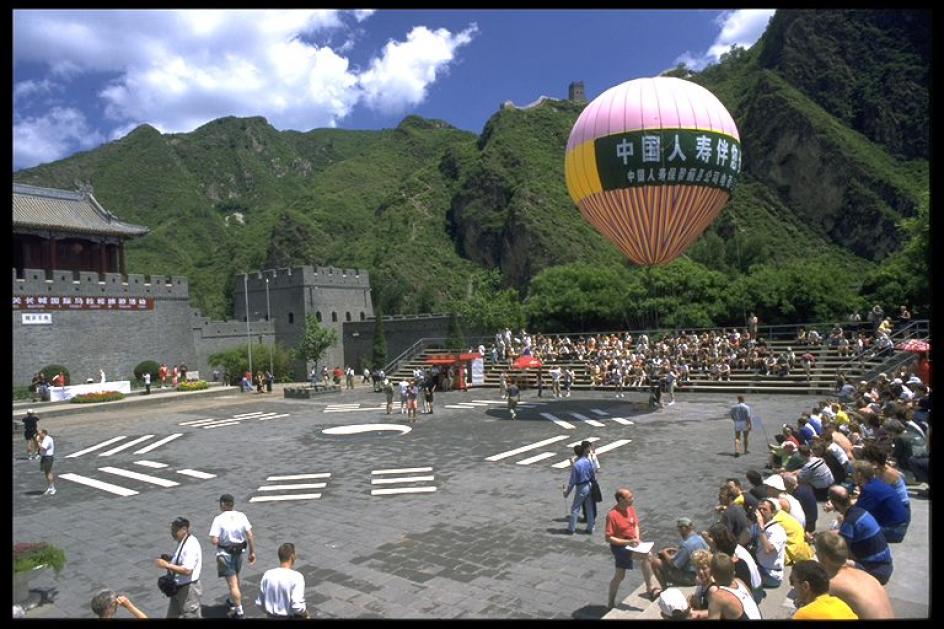
Most runners are aware of the zen-like state that one enters into during a long race - but what a setting for this to occur! Here, nature surrounds you and you feel so close to the culture of the country that the experience is almost overwhelming. It was difficult to see how we could improve upon this. None of us were in doubt as to the quality of the experience on offer but we faced a challenge when trying to assess the level of difficulty. Just how many climbs and hills would we able to include along a route which featured more than 5000 steps? What would it be like for runners if temperatures reached 40 degrees centigrade? Would people fall off the wall? Would they die? I didn’t know the answers to these questions!
"An idea took hold of me. I announced to my extremely sceptical travelling companions that I myself intended to take part in the very first marathon along the Great Wall. After all, if I could run it, then so could others."
An idea took hold of me. I announced to my extremely sceptical travelling companions that I myself intended to take part in the very first marathon along the Great Wall. After all, if I could run it, then so could others. I figured there would be many others just like me - people who get a stitch just from brushing their teeth. We would just have to get over it, and indeed, when the day came, I did run it along with five other crazy marathon novices much to the chagrin of the pros.
The route along the wall defined itself. Either you run yourself ragged along the top of the wall, or you take it easy and do it at your own pace. The run had to be tough, and we wanted to call it the world’s toughest marathon, so there needed to be weight behind those words. It quickly became clear that two very difficult up and down sections of the wall totalling eight kilometres and featuring thousands of steps would add an hour or two to the times of the most seasoned marathon runners. All that remained was to plan the rest of the route through this beautiful landscape.
After that initial trip to China I became more and more worried about the large number of officials we would have to employ. Just how would we organise all of this from what was effectively the other side of the world? That was the challenge we faced.
Safety had to be our first priority. We would need to place many drinking stations along the route so that runners would not run low on fluids. In addition, we would have to have Samaritan stations, qualified doctors and nurses, well-functioning communications and emergency relief teams. The race had to be well catered for with qualified staff who knew all about running, as these are the only kind of people you can rely on in a critical situation.
To that end, during the first year we built up a tremendous network of qualified volunteers recruited via the Danish Athletic Federation. Furthermore we sourced a small army of medics, radio technicians, timekeepers and practical helpers, many of whom were former elite runners. All of this was organised at the Albatros head office in Copenhagen. Today, that spirit of cooperation is still alive and well, and our team of helpers, some of whom are professional but many of which are volunteers, continue to make sure the Great Wall Marathon, and our other marathons, run as smoothly and as safely as possible. Indeed the Great Wall Marathon’s excellent safety record is entirely down to the expertise and professionalism of this team.
Every year we evaluate the route of the Great Wall Marathon and make small adjustments to it. This doesn’t make much difference to its difficulty as the length along the wall remains fixed year in and year out. But the temperature on race day can make a difference. I clearly remember the first ever race taking place under a blazing sun, with temperatures around the 33-34 degree mark and not even the slightest whiff of a breeze.
This was a further challenge we hadn’t anticipated. Part of the route passes through a dry river bed littered with huge boulders that became red hot under the merciless sun. Running through it felt like being in a sauna and the place was soon nicknamed ‘the Gobi Desert’. It was an apt name. To compensate for the heat, we moved the start time of the next race back a bit to the early morning. This proved to benefit the fast runners, who made it home pretty quickly, but did little for the laggards (to which I can personally attest) who had to pass through the area with the sun fully up!
The Social Marathon
Avid runners want to break records - their own at the very least. The yardsticks against which marathons are measured are the fast courses such as the Berlin Marathon. Naturally this made us wonder how a race like the Great Wall Marathon, in which people would probably record their slowest times, would fare. Some shook their heads and declared that the ‘serious’ runner would not be interested in taking on such a challenge, and that it was not a ‘proper’ marathon. But these voices were proved to be wrong and we found that there was interest from both serious and not-so-serious runners right from the start. Everyone seemed to want to join in - from the elite ‘supermen’ at one end to people who looked like everyone’s favourite aunt or uncle at the other.
These days, when we run the race, we are accustomed to seeing the elite athletes tear off from the start, leaping up the steps and bounding away into the distance, while the rest of us set off at an easy pace and have a well earned rest every five to ten minutes. We take photographs, talk to one another and have a refreshing drink. In this way we always have a good excuse for our so-so race times at the end. Most people enjoy this sedate pace and they are able to interact with the local kids and pensioners they meet along the route, and enjoy the magnificent scenery as well. And that’s the funny thing about the Great Wall Marathon - its curious mix of extreme competitors amount the first quarter of finishers, and something a bit like family fun for the rest of us.
Without even meaning to, with the Great Wall Marathon we hit the zeitgeist of the times with our concept of social marathons - where time spent with family and friends is of tantamount importance - combined with the growing fascination for ‘adventure’ events.
This latter trend was already becoming popular via extreme races in places like the Sahara and through mountain ranges. And although the Great Wall Marathon could be seen as both an adventure and somewhat extreme, it was the social angle that we wanted to emphasise right from the beginning. In fact, we wanted the marathon to have the feel of a family outing.
Why travel to race on the other side of the world without also taking the time to meet new people, experience a different culture and enjoy some sightseeing at the same time?
Hundreds of thousands of runners attend events such as the great marathons in London, Sydney or New York, but how many of them actually spend a bit of time being tourists there as well? Most of them rush off back home to be with their families at the end of the race, so we thought ‘why not get them to bring their families along as well?’ By far the majority of long distance runners are past their younger years. They probably have a family and are in the midst of their career. They are going on a vacation, so why not combine the two?
That idea grew into a concept of a race that involved group travel and families. The race has become part of the whole package, and comes wrapped in a cultural experience complete with skilled guides and a solid programme both before and after the race. Runners and their families are put into groups and allocated a tour bus each, along with some tour guides. The guides help out with the logistics of being in the right place at the right time.
The Great Wall Marathon is as good an example as any in that it features a route inspection before the race so that runners can get a look at where they are running, and others in the group can get to see the Great Wall. This inspection day turns into a day trip complete with an lavish lunch, a trip to a local village and sightseeing opportunities for all the family. Furthermore, there are 5km and 10km runs, so family members can share the thrill of running along the wall if they want. Lots of kids have come home with a medal that they are proud of - along with their marathon-running mum or dad. I sometimes wonder if we’ve created a few new runners in this way…
At the end of it all, many participants come home with quite a few new friends - many of them for life!
